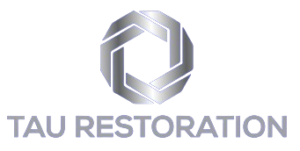WATER DAMAGE RESTORATION
Assessing Water Damage
Water damage in homes or businesses can result from various sources such as burst pipes, leaks, floods, or even excess humidity.
When water infiltrates a building, it can seep into walls, floors, orother porous materials. This can cause structural damage, creating the ideal environment for mold growth. Immediate action is crucial to mitigate the damage and prevent further issues.
Water Damage can lead to mold growth
One of the most significant concerns associated with water damage is the potential for mold growth. Mold spores are naturally present in the air. When they find a moist environment with organic material to feed on, they can quickly multiply.
Water-soaked materials like drywall, carpeting, and insulation provide ample nutrients for mold spores to thrive. Mold not only damages building materials, but also poses health risks to occupants, triggering potential respiratory issues.
A Few Causes of Water Damage
Water damage can result from various sources, but some of the most common causes include:
- Leaking or Burst Pipes: This is a frequent cause of water damage in homes, often due to aging pipes, clogged drains, overflowing toilets, leaking fixtures, freezing temperatures, or accidental damage from construction or renovation work.
- Appliance Failures: Malfunctions in household appliances such as dishwashers, washing machines, water heaters, and refrigerators can lead to leaks or flooding if not maintained properly.
- Roof Leaks: Damaged or improperly installed roofs can allow water to seep into the home, especially during heavy rain or, in Central Florida, hurricanes.
These causes highlight the importance of regular maintenance and quick response to any signs of water damage to prevent secondary problems.
Mitigating Water Damage
Effective mitigation of water damage involves swift action to remove standing water, dry out affected areas, and prevent mold growth. We utilize specialized equipment such as industrial air movers and dehumidifiers to thoroughly dry structures and contents.
We also apply antimicrobial treatments to inhibit mold growth. This ensures the affected area is safe for habitation or business operations.
Delaying mitigation efforts—especially after a hurricane—can exacerbate the damage and increase restoration costs significantly. Lingering moisture can weaken structural integrity, promote mold colonization, and compromise indoor air quality.
Therefore, property owners should address water damage promptly (even if it seems minor). This will help avoid more extensive repairs or health hazards in the future.
Conclusion
Understanding the implications of water damage, its propensity to foster mold growth, and the critical need for timely mitigation is essential for property owners.
By acting swiftly and employing professional restoration services, individuals can minimize property damage, safeguard indoor air quality, and mitigate health risks associated with mold growth.
Give us a call if you have water damage in Altamonte Springs or Orlando!






